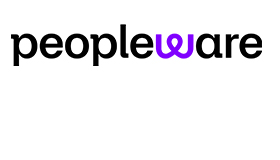Dean Couchman of injixo discusses how you can begin to prepare for the “new normal”, as COVID-19 cases in Europe finally begin to reduce.
Contact centres are getting ready for life after the pandemic lockdown and a return to normality. This is one of those occasions when planning will be vital for success.
But before starting detailed plans, we need to ask the big question: shall we “return to normal”, simply reverting back to how the operation was previously run?
Or is now the time to consider defining a “new normal” in which we make step changes that make the future better for customers, agents and business efficiency?
The Elements of the New Normal in Contact Centres
As usual, there are three elements to consider: people, technology and processes. The ‘new normal’ needs to be evaluated by its impact on the business, the customer and the employee, remembering that these three forces are inextricably linked in complex ways.
Damage employee satisfaction and you damage the customer experience, which in turn damages the bottom line.
The “new normal” needs to be evaluated by its impact on the business, the customer and the employee, remembering that these three forces are inextricably linked in complex ways.
The New Normal: People
Employees have started to change their wants and needs from an employer. This is famously true of the millennial generation but in fact the work expectations of all generations is changing.
Today’s contact centre agent places greater emphasis on job satisfaction, including the hours they work, the flexibility of working times, work/life balance and even the location at which they work.
Thousands of agents have been forced to experience home working for the first time during the pandemic. Many of them have discovered to their surprise that they like it.
It’s good for customers and the business, too. Is this the time to embrace home working on a permanent basis?
The option of working around your availability is a big win for agents. Home working makes it so much easier to balance work and personal commitments.
Whether it’s home education during the lockdown or the school run when the schools reopen, home working dramatically improves well-being for some agents, while reducing personal costs and making agents more satisfied in their roles and with their employers.
Home working is a win for customers, too. We’ve heard reports that agents are more willing to work shifts that would be infeasible if performed in the call centre.
That means you can do better schedule optimisation and thus provide a better, more consistent customer experience, while avoiding wasteful periods of over-staffing, which is a cost-saving win for the business.
That’s not the only win for the business. We’ve heard several reports of reduced sickness levels among home-based agents. And think about how much a physical call centre building costs in rent, business rates, energy, security, insurance and so on.
The pandemic has shown that managing employees from a distance can be done with great success, using meeting tools such as Microsoft Teams, Zoom, GoToMeeting, to name but a few.
This sector alone over the recent months has seen a 37% growth.It is continuing to expand at an exponential rate with great adoption by the business and the general population.
Of course, home working isn’t for everybody. There will always need to be some agents who are based in the contact centre building, at least for some of the time.
There may need to be changes to contracts of employment and other groundwork. But the case for home working – and the scheduling options that it enables – is extremely strong.
The New Normal: Technology
Many contact centres have responded to the pandemic with investment in new technology. These investments range from purchasing of laptops for staff, enabling them to work at home all the way through to replacing legacy on-premise ACDs with cloud omni-channel platforms which do not require dedicated hardware.
In many cases these projects were already planned but with long time scales to allow all the potential risk factors such as security to be examined in detail.
The pandemic has injected urgency into the procurement and deployment of technology.In many cases, timelines have shrunk from months or years to days or weeks.
In early 2020, many contact centres still used legacy technology, restricted to working in closed environments. Phone systems needed cabling to every handset on every desk.
Servers needed to be onsite and any access to data from outside the building needed protecting by firewalls and VPNs.
Modern contact centre technology makes it easy to run a distributed contact centre. Cloud computing, soft-phones and improved broadband internet infrastructure mean that employees can work effectively and securely from any location as long as a solid internet connection is available.
Some businesses have launched a BYOD (“bring your own device”) policy which enables contact centre employees to log in to corporate systems via their own personal computers and virtual desktops such as Citrix.
This reduces hardware costs, speeds up deployment, ensures security/data protection and enables monitoring.
Now that new technology has been tried and tested on a ‘war footing’, does it make sense to go back to the old world, wasting the investment in time, money and effort?
The New Normal: Processes
Technology that enables agents to work from anywhere begs the questions: Are offices a thing of the past? At least to the scale that they had before?
If agents can perform as well or better from home because of cloud technology, why do you waste money on overheads for networks, servers and other physical hardware?
If you can have virtual meetings, you can reduce the need for meeting rooms. By running a business with home working, enabled by cloud technology, you will see a dramatic reduction in overheads.
You’ll have an increase in company profitability while having happier employees. Happy employees mean happy customers. Increased agent availability and greater schedule optimisation mean a better customer experience at lower cost.
The same wind of change that is blowing through contact centres applies across the entire economy. Customers who themselves are locked down – or continue working from home after lockdown, will exhibit different demand patterns.
For example, calls that previously could only be made outside office hours will start to be made during the day. It is going to be critical to keep pace with these changes in demand patterns. Fortunately, good workforce planners already know the value of forecasting and analysis.
And today they too can benefit from cloud applications. on a subscription basis. Good applications connect to existing telecoms hardware, either located in the contact centre or in the cloud. They have minimal setup times, low costs and require no in-house support.
Historically, it’s been possible to implement a workforce planning process supported by spreadsheets such as Microsoft Excel. Changing demand patterns, the growth of non-call channels and the flexible working practices of home working mean that Excel will struggle more than ever.
Moreover, until the ‘new normal’ settles down, you will need to be able to test ‘what if’ scenarios quickly and easily. Most importantly, you will want your remote working employees to be able to interact with the planning process, to have visibility of their schedules, to be able to submit their availability, requests for time off and simply report sickness.
Conclusion
The ‘new normal’ is coming and the ‘normal’ we knew is not coming back. Businesses have been forced to make the leap and employees have accepted the changed environment.
Why stop positive change now?
In my humble opinion, now is the time to capitalise on the gains that have been made while the willingness to accept rapid, beneficial change is at an all-time high.
This blog post has been re-published by kind permission of Peopleware – View the Original Article
For more information about Peopleware - visit the Peopleware Website
Call Centre Helper is not responsible for the content of these guest blog posts. The opinions expressed in this article are those of the author, and do not necessarily reflect those of Call Centre Helper.
Author: Peopleware
Published On: 26th May 2020 - Last modified: 18th Jun 2025
Read more about - Guest Blogs, Dean Couchman, Peopleware






 Peopleware is a leading workforce management (WFM) solution, trusted by over 500,000 users in 30+ countries. With smart forecasting, automated scheduling and real-time management, organizations can optimize workforce efficiency and keep work aligned with demand. From precise time tracking to flexible planning, Peopleware helps organizations boost operational efficiency and foster a more engaged, productive workforce.
Peopleware is a leading workforce management (WFM) solution, trusted by over 500,000 users in 30+ countries. With smart forecasting, automated scheduling and real-time management, organizations can optimize workforce efficiency and keep work aligned with demand. From precise time tracking to flexible planning, Peopleware helps organizations boost operational efficiency and foster a more engaged, productive workforce. 









